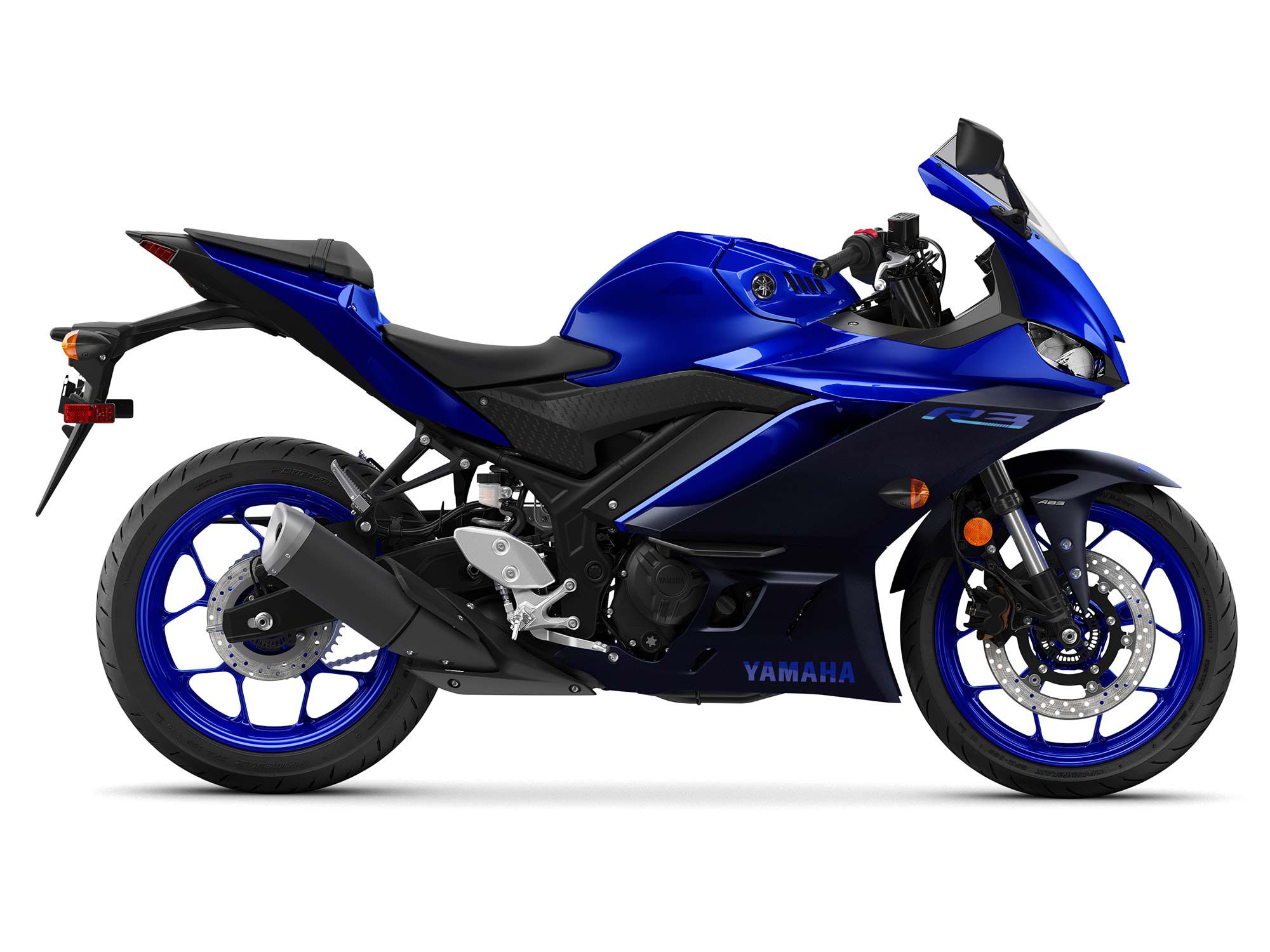
Ups
- Point-and-shoot handling
- Compact dimensions and friendly character make it a great beginner sportbike
- Great brake lever feedback
- Beautiful World GP 60th Anniversary Edition
Downs
- 321cc engine falls behind the larger-displacement competition
- No assist-and-slipper clutch, a feature common to both its competition and larger siblings
Verdict
The popularity of the YZF-R platform is undeniable. As the entry into that lineup, the peppy, race-derived YZF-R3 is one of Yamaha’s top sellers thanks to sharp handling and beginner-friendly character. But is that enough when competitors’ engines grow to 400cc? A point to consider when shopping for a small-displacement sportbike.
Overview
Yamaha began competing in the Road Racing World Championship Grand Prix in 1961, and has been learning technological and cultural lessons that inform its motorcycle development ever since. That research, and its results, is carried on today by the tuning fork’s supersport lineup, from the YZF-R1M to the YZF-R3. To commemorate the dawn of its racing heritage, Yamaha decked out its YZF-R series in World GP 60th Anniversary livery for the 2022 model year.
From its slippery bodywork to details like YZR-M1-inspired top clamp and forged aluminum piston technology pulled from the YZF-R1, Yamaha’s littlest supersport is clearly just as serious about its purpose as the more powerful Rs. While the R3 shares these similarities, its tractable 321cc engine makes it attractive to riders who may feel intimidated by the larger iterations. The R3′s refined chassis and communicative brakes make it especially responsive both on the track and on winding roads.
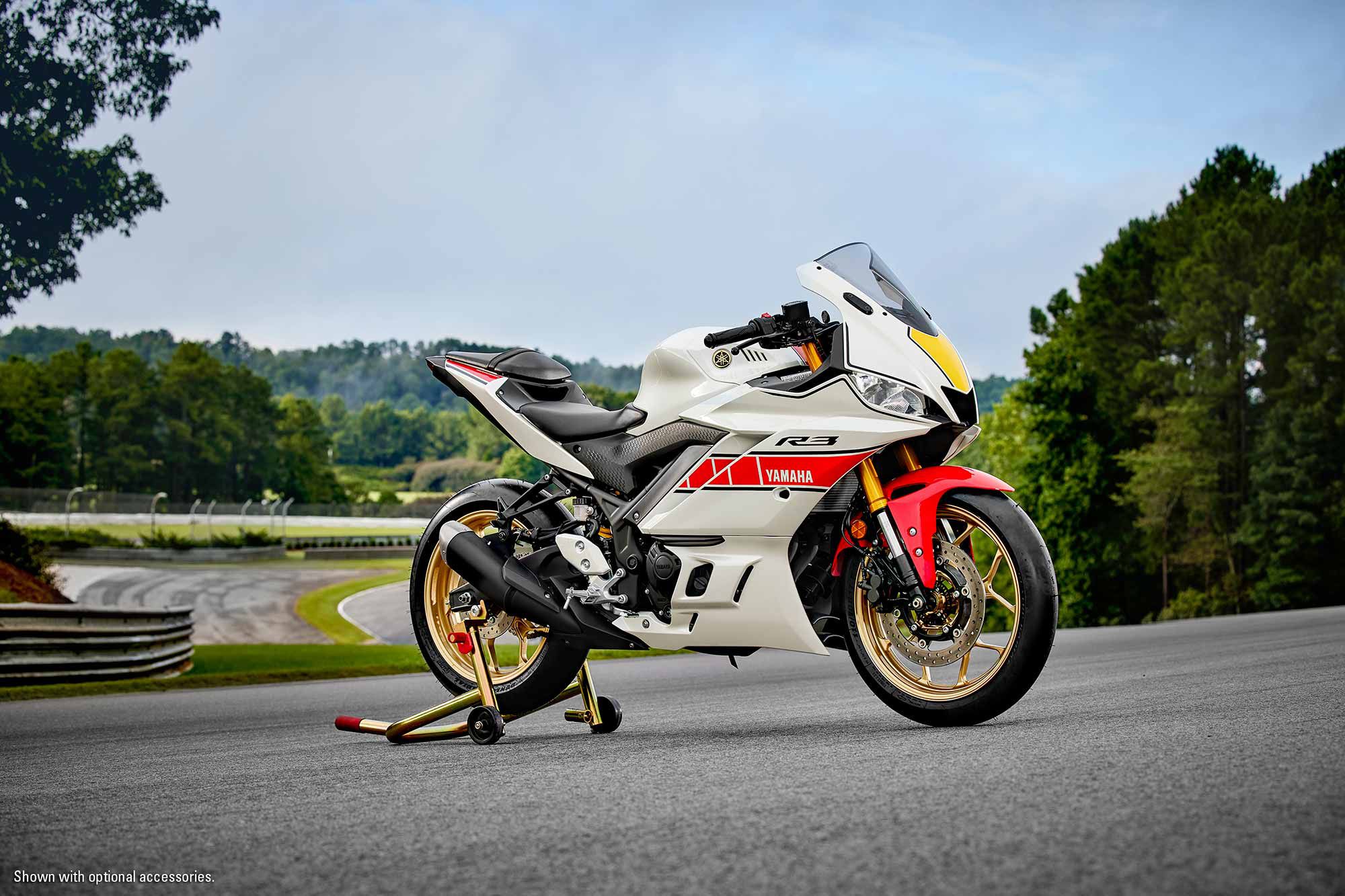
Updates for 2022
Bodywork graphics have changed for this year, but only slightly, not counting the addition of the World GP Anniversary Edition.
Pricing and Variants
Midnight Black and Team Yamaha Blue return as the two primary color options for the base model, which rings in at $5,299. The YZF-R3 World GP 60th Anniversary Edition, at $5,499, looks particularly good in 60th anniversary Yamaha Heritage White and Rapid Red chain-block livery.
Competition
Competition is in its DNA, which is fortunate as this superbike-derived R3 has loads of tough rivals in the Kawasaki Ninja 400, KTM RC 390, Honda CBR300R, and Suzuki GSX250R.
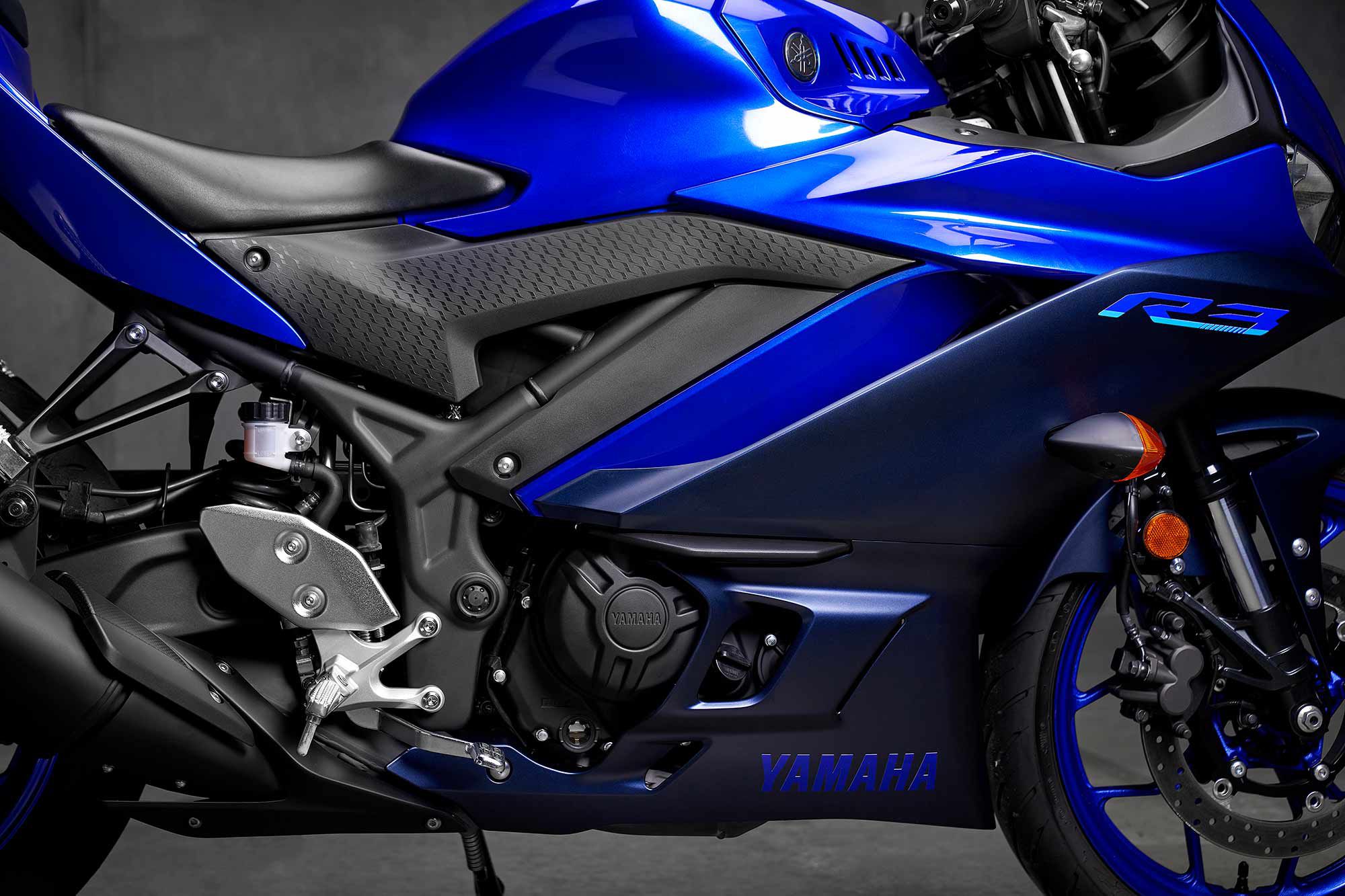
Powertrain: Engine, Transmission, and Performance
The R3′s 321cc parallel twin is mild mannered enough to provide riders with an education on managing a motorcycle’s power; the question, for some, is whether it’s enough to entertain riders as they grow, like Kawasaki’s Ninja 400. When we put these two head to head, we concluded that the R3′s lower displacement can indeed hold it back in the eyes of the competition-oriented. That said, the engine is engaging, and loves to be revved high in the 9,000 rpm range as seen by its run on the dyno, where it made 36 hp at 10,700 rpm and 19.8 pound-feet of torque at 9,000 rpm. In our earlier run of the R3, we applauded the bike for its impressive roll-on acceleration at speed and the aggressive sound from the 2-into-1 exhaust.
One odd omission remains an assist and slipper clutch, a feature seen on the YZF-R7 and many of the R3′s rivals. This can hinder the bike from reaching its true potential, because it requires smooth clutch actuation from its rider to keep the chassis stable.
Handling
In the same comparison as mentioned before, Cycle World found that the R3 really shines in its chassis and brake feel: “Refine your downshift technique and the Yamaha will reward you with a confidence-inspiring feel from entry to exit. It’s nimble on its feet, enabling midcorner steering corrections when needed and tackling side-to-side transitions with more aggression than the Ninja. The Yamaha is a very sweet-handling motorcycle.”
The inverted telescopic fork and shock love to be ridden aggressively. Both are stiff and sporty, delivering excellent track manners; the downside is that this stiffness can beat up the rider on average, torn up roads. Overall, though, it’s tough to beat the refinement and control that the R3 offers during sporty rides.
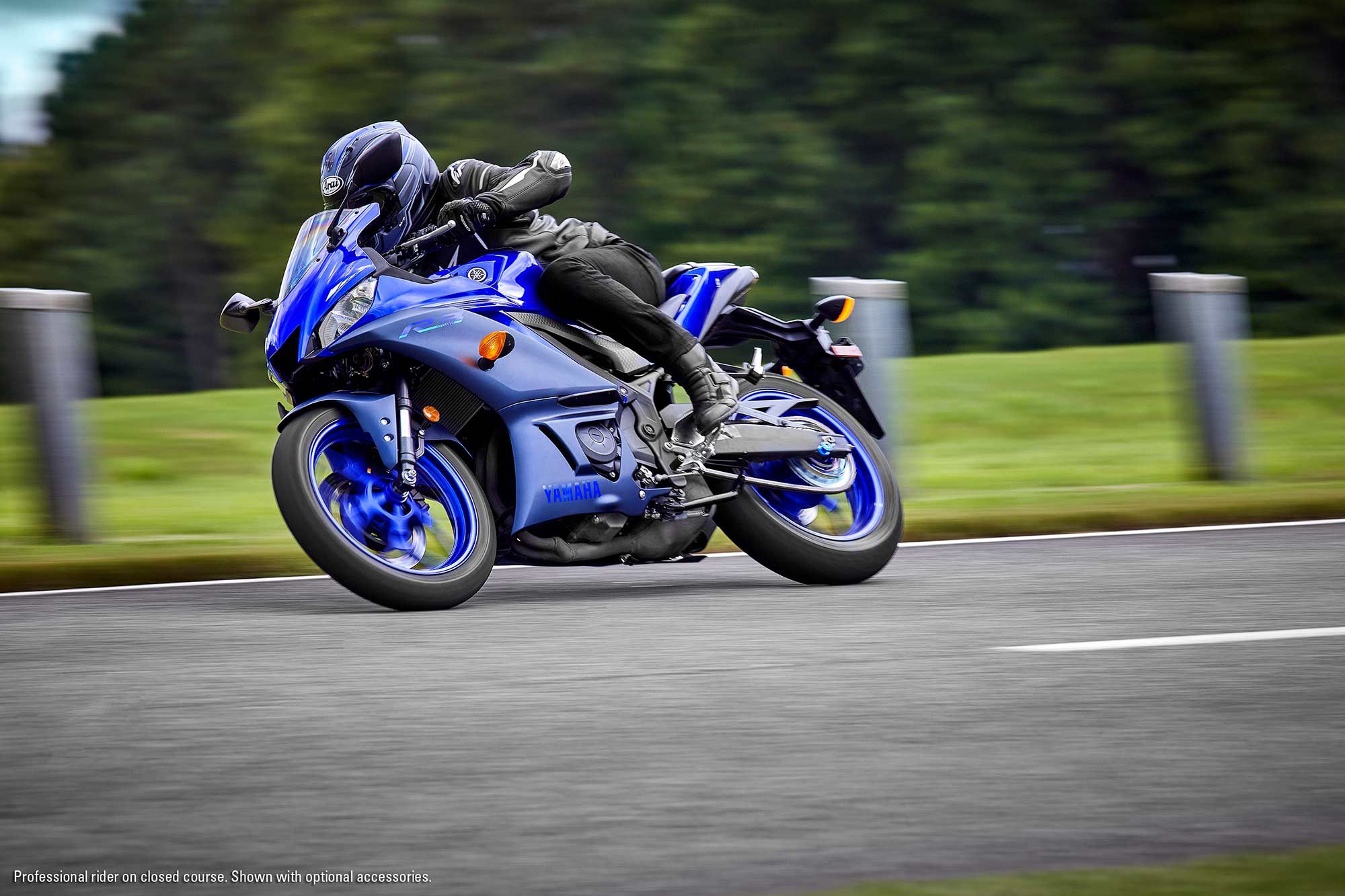
Brakes
When trail-braking on the track, the R3 does a fine job of communicating how much brake pressure is applied and how much is left to use. Additionally, the front brake, with its single 298mm disc, is responsive without being too progressive for novice riders. ABS is standard at both ends.
Fuel Economy and Real-World MPG
Fuel economy is claimed to be 56 mpg.
Ergonomics: Comfort and Utility
Clip-on handlebars and tucked pegs place the rider in a sporty riding position over the tank and behind the fairing for great wind protection at speed. This locked-in position may not be the most ideal for longer trips, but when it comes to spirited track rides or canyon roads it has its benefits. The seat is flat and narrow, and its 30.7-inch seat height is approachable for shorter riders.
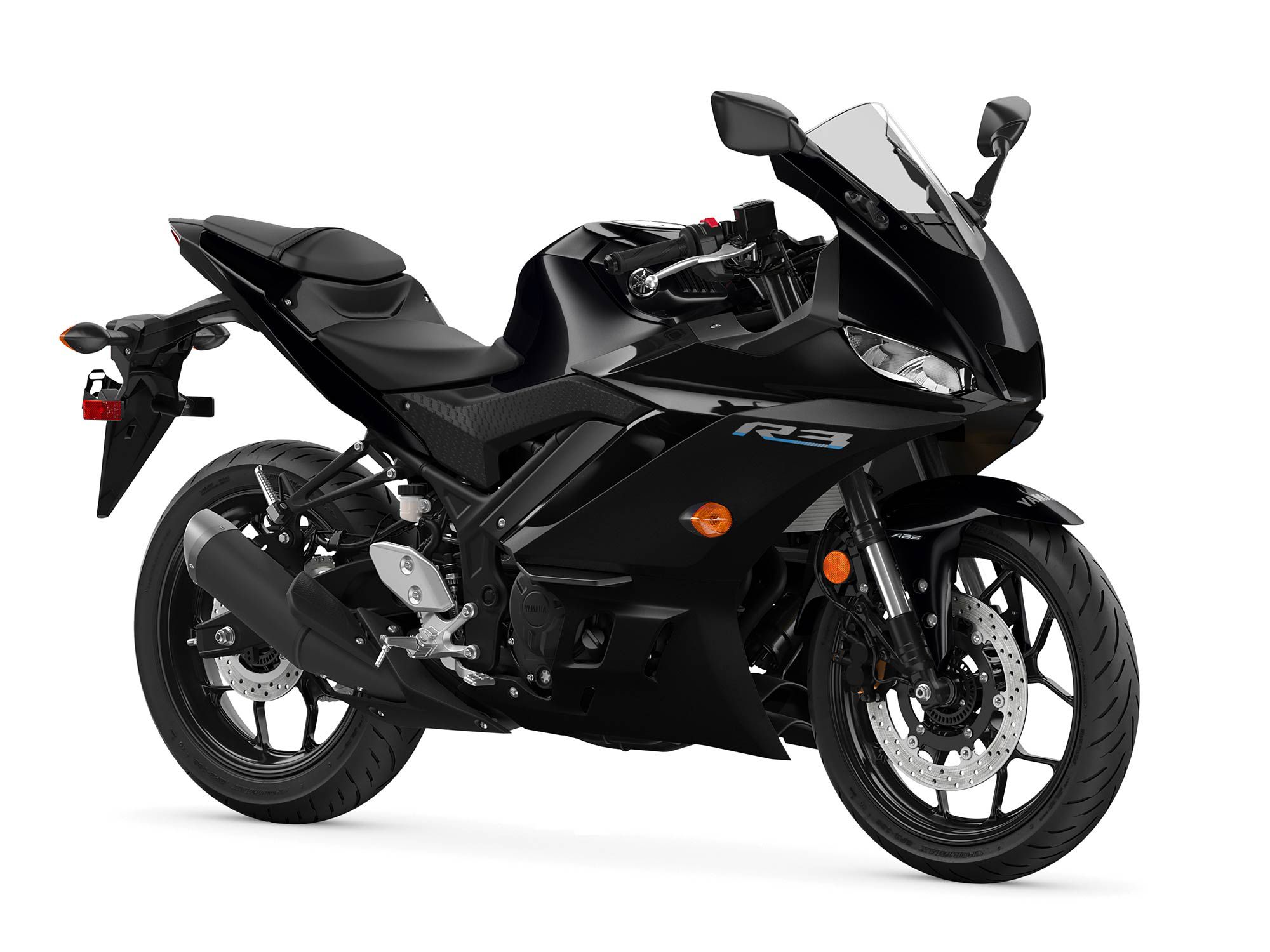
Electronics
Although it is missing ride modes and a slipper clutch, the R3 does come standard with ABS, LED headlights and taillights, and an LCD dash. The LCD display’s layout is similar to the R1′s, but is less technologically advanced.
Warranty and Maintenance Coverage
The R3, in both standard and World GP edition, has a one-year limited factory warranty.
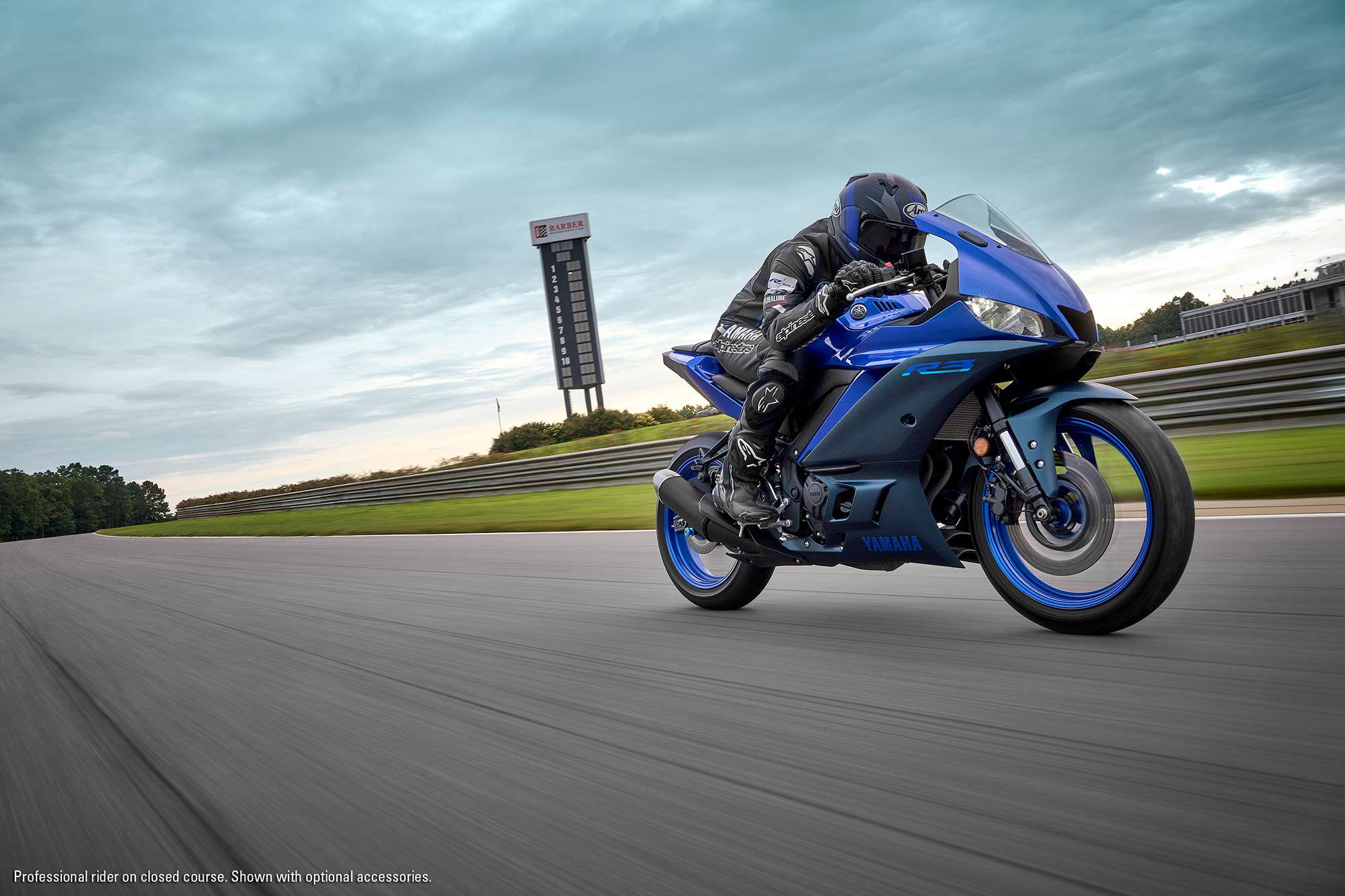
Quality
Yamaha has done an outstanding job in making the little R3 nearly as nice and refined as its larger superbikes. The R3 has sleek bodywork and an organized command center; the only minor complaint is its turn signals, which are unusually big and bulbous.
2022 Yamaha YZF-R3 Claimed Specifications
| MSRP: | $5,299/$5,499 (World GP Edition) |
| Engine: | 321cc, DOHC, liquid-cooled inline-twin; 4 valves/cyl. |
| Bore x Stroke: | 68.0 x 44.1mm |
| Transmission/Final Drive: | 6-speed/chain |
| Cycle World Measured Horsepower: | 36 hp @ 10,700 rpm |
| Cycle World Measured Torque: | 19.8 lb.-ft. @ 9,000 rpm |
| Fuel Delivery: | Fuel injection |
| Clutch: | Wet, multiplate |
| Engine Management/Ignition: | N/A |
| Frame: | N/A |
| Front Suspension: | Inverted telescopic fork; 5.1 in. travel |
| Rear Suspension: | Monocross shock, preload adjustable; 4.9 in. travel |
| Front Brake: | 298mm hydraulic disc w/ ABS |
| Rear Brake: | 220mm hydraulic disc w/ ABS |
| Wheels, Front/Rear: | Cast aluminum; 17 in. / 17 in. |
| Tires, Front/Rear: | 110/70-17 / 140/70-17 |
| Rake/Trail: | 25.0°/3.7 in. |
| Wheelbase: | 54.3 in. |
| Ground Clearance: | 6.3 in. |
| Seat Height: | 30.7 in. |
| Fuel Capacity: | 3.7 gal. |
| Claimed Wet Weight: | 375 lb. |
| Contact: | yamahamotorsports.com |
Source: MotorCyclistOnline.com
